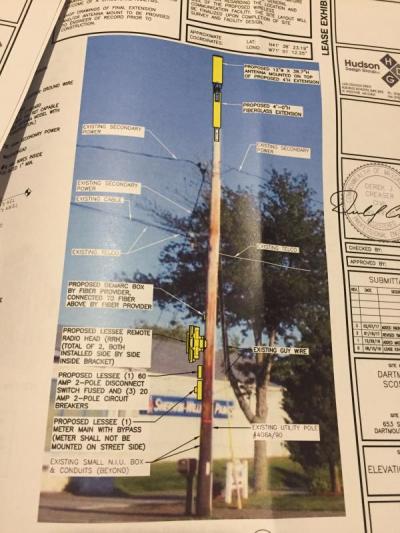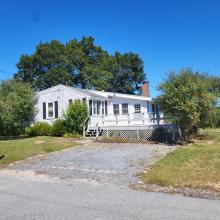Telecommunications regulations updated; Verizon to move ahead with coverage improvements
After battling through tech jargon and outdated legislation, the Select Board has approved seven installations that would better cell service around town.
At the April 24 Select Board meeting, Verizon representatives proposed seven small cell locations, which are intended to both fill service gaps in high-traffic areas and improve overall efficiency.
The way it works is that when high-traffic areas — such as the mall or high school — use about 90 percent of service from a macro cell tower, some of that demand is offloaded onto small cells, which are installed specifically around those high-traffic sites. This improves cell service for the high-traffic areas, but also frees up service for the general area of the macro cell, improving service as a whole, officials explained.
The approved small cell locations are at 153 Faunce Corner Mall Road; 154 Faunce Corner Mall Road; 653 State Road; 392 State Road; 533 State Road; 789 State Road; and 215 Russells Mills Road.
Board Chairman Frank Gracie voted against the Russells Mills Road location because it is a residential neighborhood, but that was the only objection.
It is not yet clear when the small cell installations at these locations would begin. The technology updates are intended to support a 5G data network.
The proposed caster antennas would look similarly to transformers, said Verizon representatives. There are two proposed dimensions; 12-by-38.7 inch antennas, along with a four-foot fiberglass extension, would sit atop utility poles, or 12-by-28.7 inch antennas mounted on the side of existing utility poles. Each unit would be completed with a remote radio head, switch fuse and circuit breakers, and a meter that would sit lower on the pole.
During prior discussions, the board voiced concerns about visibility, how the sites would affect neighborhoods, and future growth.
Board members said that low-hanging equipment could block drivers' sight lines. To prevent this, they voted to update the bylaws so that no object within 20 feet of the ground can extend more than one foot, six inches from the utility pole. If higher than 20 feet up, the object cannot extend more than three feet, six inches.
"The less things that are hanging out from the bottom of the pole, the better," said Gracie.
Board members also asked how Verizon's growth would continue in upcoming years. Verizon currently has eight macro antennae in town, but the overall amount is estimated to be 32 due to other carriers' macro sites.
With about 10 small cells for every one macro antenna, residents can expect about 320 small cell locations within the next 10 years, officials said. That number would include cell sites for all carriers, not just Verizon.
Gracie again asked Verizon representatives where future proposed locations would be, insisting that residents have a right to know what's coming into their neighborhoods.
"When we first met, I was the first one to ask what the plan was for the future. I can't believe that somebody doesn't know where the holes [in coverage] are right now," he said.
Verizon representatives explained that coverage gaps depend on population, growth, and usage trends, and that predicting those numbers for more than a year out is a difficult feat.















